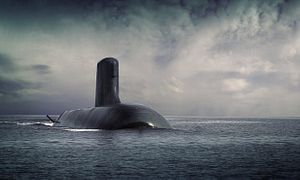The concept design for the Royal Australian Navy’s SEA 1000 Future Submarine Program (FSM) is slated to be completed by the end of 2018, according to Rear Admiral Greg Sammut, head of the FSM program. “We’re in a position this quarter to finalize the concept design, including key sizing parameters that will ensure that we also meet key requirements to length,” Sammut told IHS Jane’s on November 2.
According to Australian Defense Magazine, work is presently focused on finalizing the concept design “so more resources can be moved in 2019 to basic design, which itself would move to detailed design around 2022.”
Currently, initial design work on the new Shortfin Barracuda Block 1A submarines, a diesel-electric derivative of Naval Group’s Barracuda-class nuclear attack submarine (SSN), is taking place in Adelaide, home of the Australian Submarine Corporation (ASC), and Cherbourg, France. The final submarine design contract was expected to be concluded in 2019. A detailed design contract, however, cannot be finalized and submarine construction kick off until the conclusion of a strategic Australian-French partnering agreement (SPA).
Naval Group has been working under a $361 million 2016 design and mobilization contract while negotiating the SPA. Negotiations on the document, which was expected to be signed in September, have reportedly stalled. Talks over the SPA have deadlocked as a result of disagreements over intellectual property and warranty periods for defects, as well as Australian concerns over a possible future sale of Naval Group, which is majority owned by the French state.
“We haven’t put a timeline on it because it’s more important to get the agreement right. Of course we want to conclude it as soon as possible. We’re at stages now where we’re dealing with the remaining difficult issues,” Sammut was quoted as saying by Australian Defense Magazine on November 1.
“We must ensure there is an equitable set of arrangements in place such that both parties can continue to work together through problems, not end up with a contractual impasse where we can’t manage the issue and have to halt work because we have to renegotiate terms and conditions that didn’t exist,” he added.
Australian Defense Minister Christopher Pyne has denied that negotiations have stalled. “Negotiation of strategic partnering agreement is continuing & we will ensure we end up with an equitable & enduring agreement to deliver the capability our servicemen & women need, and get the best deal for Australian taxpayer,” he tweeted in September.
The SPA is expected to be signed in early 2019. Construction of the first Shortfin Barracuda submarine is anticipated to kick off in 2022 with the first boat scheduled to be delivered in the early 2030s. Notably, Japan, which failed in its bid for the submarine contract in 2016, has offered to sell submarines to Australia should negotiations between Naval Group and the Australian government collapse.

































